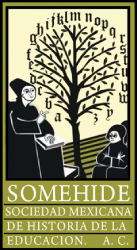El uso de materiales visuales en la investigación histórico-educativa
DOI:
https://doi.org/10.29351/rmhe.v4i8.85Resumen
La mayor parte de la investigación cualitativa está dominada por el lenguaje. Sin embargo, el deseo de crear imágenes ha existido a lo largo de la humanidad, desde las pinturas rupestres en el tiempo de las cavernas hasta las miles de millones de selfies que son tomadas cada año con dispositivos móviles. Usamos imágenes no sólo para representar el mundo que nos rodea, sino también para compartir nuestros sentimientos con otros, ya sea como memorial de un momento importante o para transmitir las emociones de ese momento particular. Hoy en día, el uso de la tecnología nos permite considerarnos fotógrafos documentales. De manera colectiva, esas imágenes son significantes de una cultura, de manera individual, son una evidencia de nuestra existencia y pueden ser analizadas como tal. En años recientes ha crecido el interés de algunos investigadores por usar imágenes para mejorar la comprensión de la condición humana, sin embargo, como plantea Cohen: "si los historiadores han oído hablar de este giro visual... lo han ignorado" (Cohen, 2003:251), por lo que lo visual mantiene un estatus menor que lo textual.
Citas
Benin, David y, Lisa Cartwright (2006), “Shame, Empathy and Looking Practices: Lessons from a Disa- bility Studies Classroom”, Journal of Visual Culture, vol. 5, núm. 2, agosto, pp. 155-171.
Devlieger, Patrick, Ian Grosvenor, Frank Simon, Geert Van Hove y Bruno Vanobbergen (2008), “Visua- lising disability in the past”, Paedagogica Historica, vol. 44, núm. 6, diciembre, pp. 747-760.
Dussel, I. (2013), “The Visual Turn in the History of Education: Four Comments for a Historiographical Discussion”, en Th. S. Popkewitz (ed.), Rethinking the History of Education. Transnational Perspectives on its Questions, Methods, and Knowledge, Palgrave Macmillan, Nueva York, pp. 29-49.
Edwards, Elizabeth (2010), “Photographs and history: emotion and materiality” en S. H. Dudley (ed.), Museum materialities: objects, engagements, interpretations, Abingdon, Routledge, pp. 21-38.
Foucault, Michel (1997), “For an ethics of discomfort” en Sylvére Lotringer y Lysa Hochroth (eds.), The politics of truth: Michel Foucault, Semiotex(e), Nueva York, pp. 135-145.
Grosvenor, Ian (1999), “Visualising Past Classrooms”, en Ian Grosvenor, Martin Lawn y Kate Rousma- niere (eds.), Silences & Images: The Social History of the Classroom, P. Lang, Nueva York, pp. 83-104.
Rousmaniere, Kate (2001),“Questioning the visual in the history of education”, History of Education, vol. 30, núm. 2, noviembre, pp. 109-116.
Sekula, Allan (1984), Photography Against the Grain: Essays and Photo Works, 1973-1983, Nova Scotia College of Art and Design, Halifax.
Sleight, Simon (2016), Young People and the Shaping of Public Space in Melbourne, 1870-1914, Routledge, Londres.
Tinkler, Penny (2013), Using Photographs in Social and Historical Research, sage, Londres. Walker, John (1997), “Context as a Determinant of Photographic Meaning”, en J. Evans (ed.), The Camerawork Essays, Rivers Oram Press, Londres, pp. 52-63.
Descargas
Publicado
Cómo citar
Número
Sección
Licencia
Derechos de autor 2016 Ian Grosvenor, Kate Rousmaniere

Esta obra está bajo una licencia internacional Creative Commons Atribución-NoComercial-CompartirIgual 4.0.










